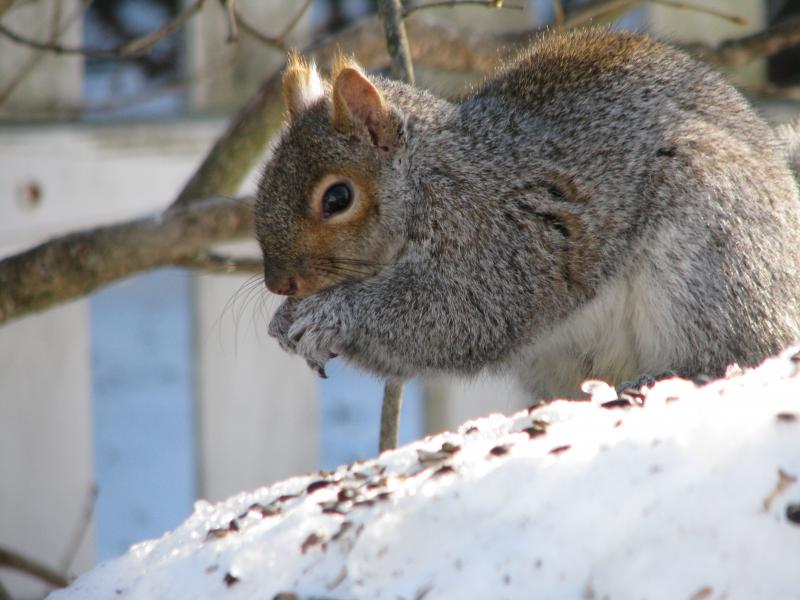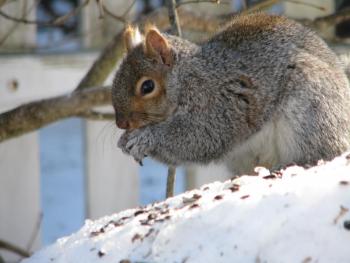Bird engineers and architects
After one of the recent snowstorms, we woke up to see our bird feeding area covered in 10 inches of snow. But, before we could get out to clean it off, we saw a gray squirrel digging around underneath.
Backyard bird feeding enthusiasts love to complain about squirrels hogging all the bird seed meant for the birds and chewing holes in bird feeders. In fact, we’ve done our share of complaining. Yet this squirrel was actually performing a service for the birds by clearing the snow from the fallen seeds, though for his (or her) own selfish reasons!
This squirrel’s “snow-removal project” is an example of how animals can change their environment just by engaging in their normal behavior. Scientists and the general public are only fairly recently starting to give more attention to some of the ways that birds and other animals can be ecosystem engineers and architects.
Our recent ice storm left in its wake thousands of broken trees, many of which will die, become diseased, or invaded by insects. We expect that lots of woodpeckers will not only feed in these trees but will also do some architectural work to make cavities of various sizes and shapes. These cavities are vital to so many hole-nesting birds (and other creatures) that can’t readily excavate an entire cavity themselves; these include species like chickadees, tree swallows, saw-whet and barred owls, and great crested flycatchers.
Eagles, ospreys, gulls, herons and other fish-eating birds perform a different kind of ecosystem engineering when they feed on sea-run fish like alewives and then transport the nutrients from the fish (through their droppings and fish remains) away from the river or stream and onto upland locations. Gulls that have large nesting colonies on many of Maine’s outer islands are providing a similar service by moving the nutrients from the sea onto the island.
Historically, seabird islands, where gulls and other birds had been performing this service for thousands of years, built up deep layers of these transported and concentrated nutrients through their droppings. These so-called “guano deposits” were then mined and shipped to agricultural regions for fertilizer. Many of our Maine sea captains carried in their ships loads of guano, north from South American seabird islands in the late 1800s.
We have always loved to watch blue jays and crows carry seeds away and bury them for later consumption, without much thought to the kind of ecosystem engineering such a behavior could account for in the natural world. Imagine millions of blue jays and crows across their range finding and burying millions of acorns, a great many of which will remain “planted” and grow into oak trees.
When you think about how important such behaviors are to the natural world, you quickly realize that Johnny Appleseed and Frank Lloyd Wright had nothing on these birds and wildlife!
Event Date
Address
United States

























